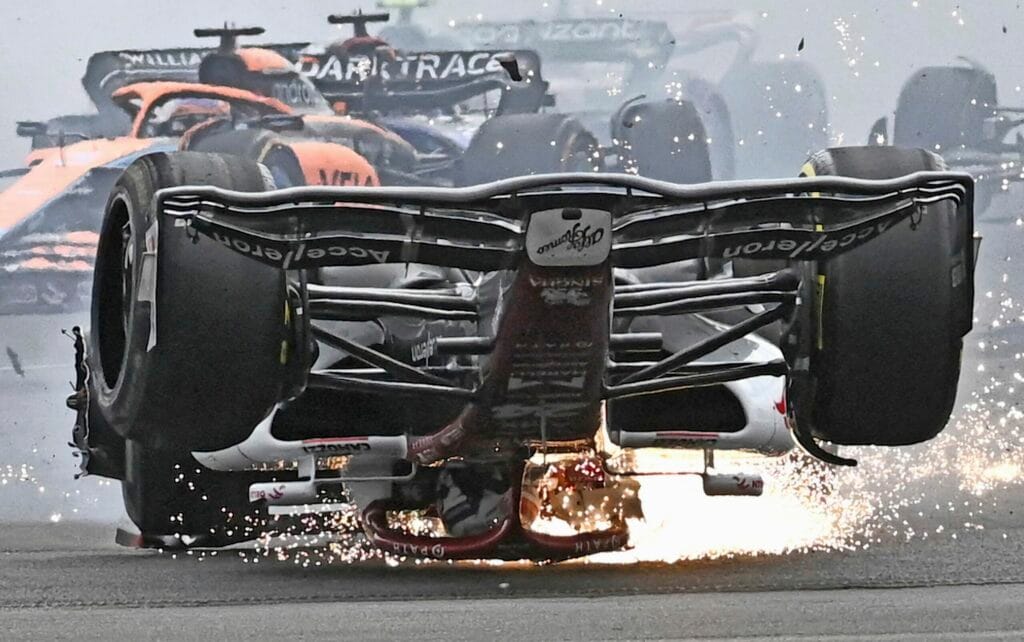Graham Watson was present when Jules Bianchi tragically crashed at Suzuka a decade ago. Since then, the broadcasting of replays of severe crashes on television has followed a strict protocol, from which not a millimeter is deviated.
In 2014, Jules Bianchi met with a fatal accident at Suzuka. What I remember from that race is that it was wet and dark, much darker than it appeared on television. When the accident occurred, it wasn’t immediately clear what had happened.
At that time, I was in the Caterham F1 garage, the team I was working for. Despite the gloomy weather making visibility poor, it was immediately clear that something serious had happened. There was a palpable feeling that the race should be stopped, but it wasn’t.
The atmosphere in the pit lane changed rapidly after we saw footage of the car and the crash on other channels like YouTube. Everyone was wondering if Jules, who had been transported to the hospital with brain injuries, was still alive. Looking back, it’s clear that mistakes were made. However, as bitter as it is, important lessons were also learned.
Implementing Safety Measures
Following the accident, Ross Brawn created a safety report in which he recommended drastic changes. One of these was to adjust the timing of the races in Asia and Australia. These were held at times to better serve the European audience. The problem was that it was getting too late: there was no room for red flags or safety cars. We reached a point where we were literally driving in the twilight. Ross suggested that these races should be brought forward. And that’s exactly what happened.
Ross’s Recommendations for Improved Safety in Formula 1
Ross’s recommendations include not only a change in start times but also better head protection for drivers. This has led to the introduction of the halo, and the use of safety cranes on the track. Suzuka has taught us an important lesson about the latter, although a few years ago, cranes were again deployed on the track. The drivers were rightly very angry about this. As a sport, we must not make the same mistakes as in the past.
Strict Protocols for Broadcasting Crashes
There have been many crashes since Jules’s accident, some severe and some less so: consider Zhou’s crash in Silverstone and Grosjean’s in Bahrain. We have a strict protocol for broadcasting replays. These are not shown until the FIA and we, the FOM, have given our approval. We must wait for the signal that the drivers are unharmed and there are no medical concerns. Only then can we start a replay.
We naturally listen in on all team radios. The first question you hear over the pit wall radio after a crash is whether the driver is okay. But even if that is the case, we wait with the replay. We still follow the protocol. A replay is never broadcast immediately after a crash anymore. In the past, it was a different story. When Michael Schumacher broke his ankle in a crash at Silverstone, it was replayed countless times. The same happened with Ayrton Senna in Imola in 1994. Now, the TV coverage of such incidents would be very different.
Monitoring and Safety Measures
We have between 32 and 38 cameras, depending on the circuit, positioned along the track. In addition, each circuit has a closed-circuit television (CCTV) system that can replay everything. We must not forget that Formula 1 is not just entertainment. Lives are at stake. People seem to quickly forget this due to a kind of – very understandable – defensive mechanism. But in motorsport, unfortunately, you can never guarantee that there will be no casualties.







